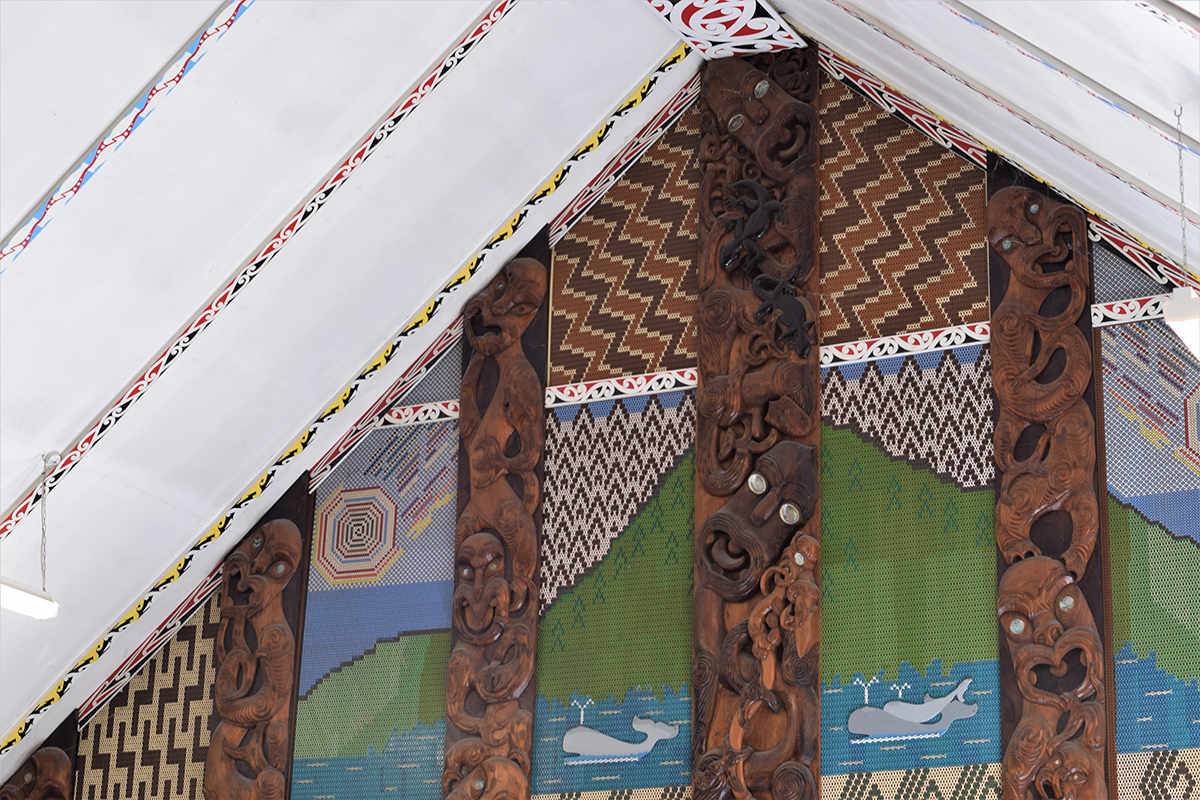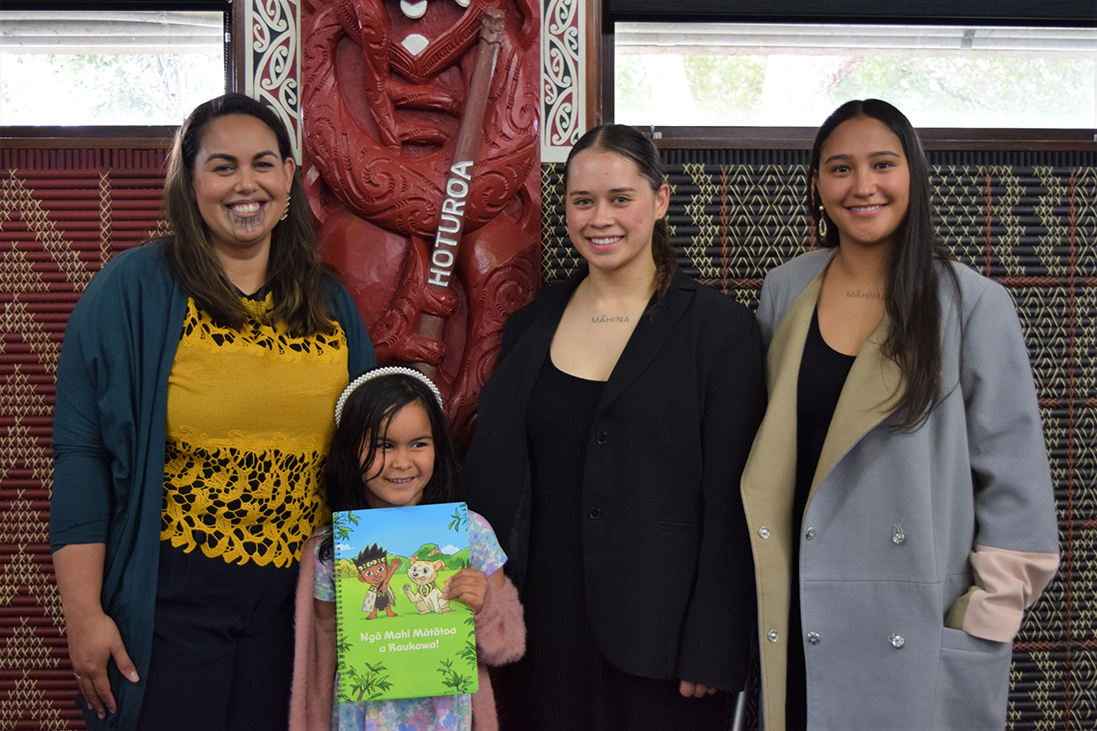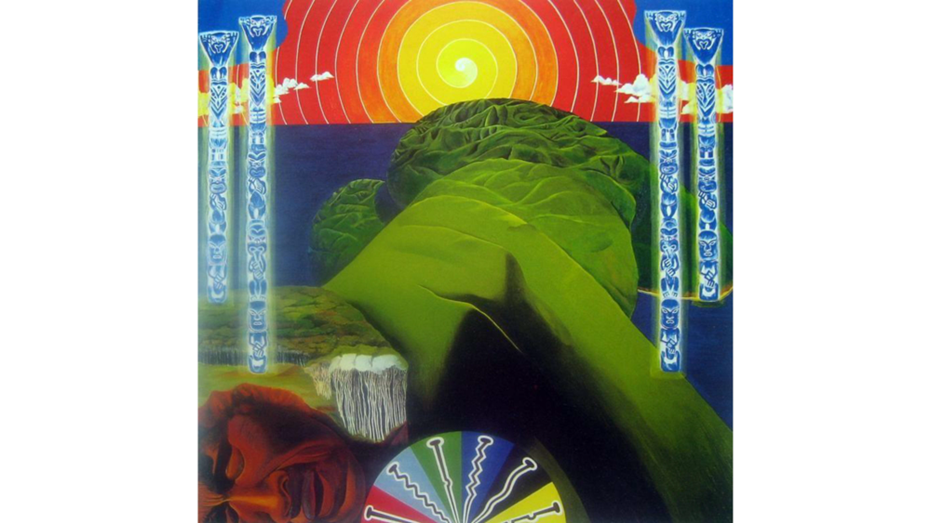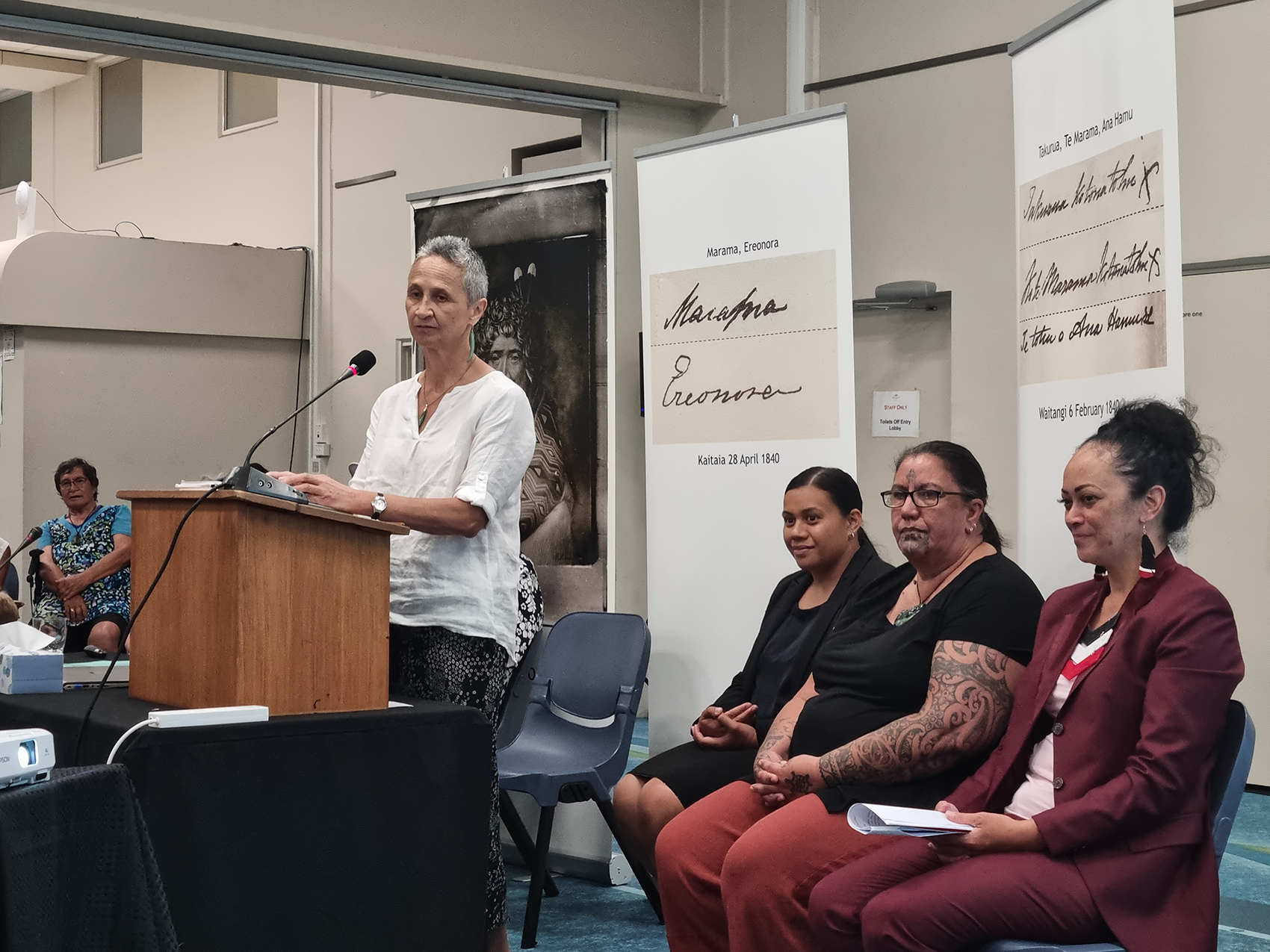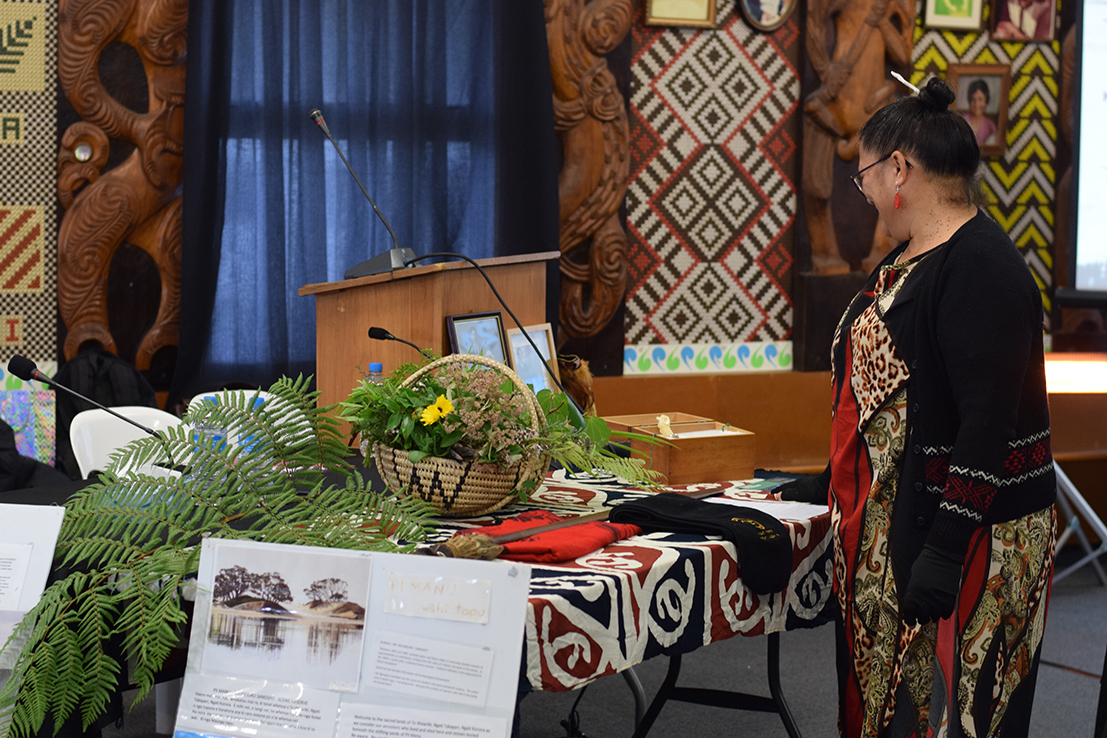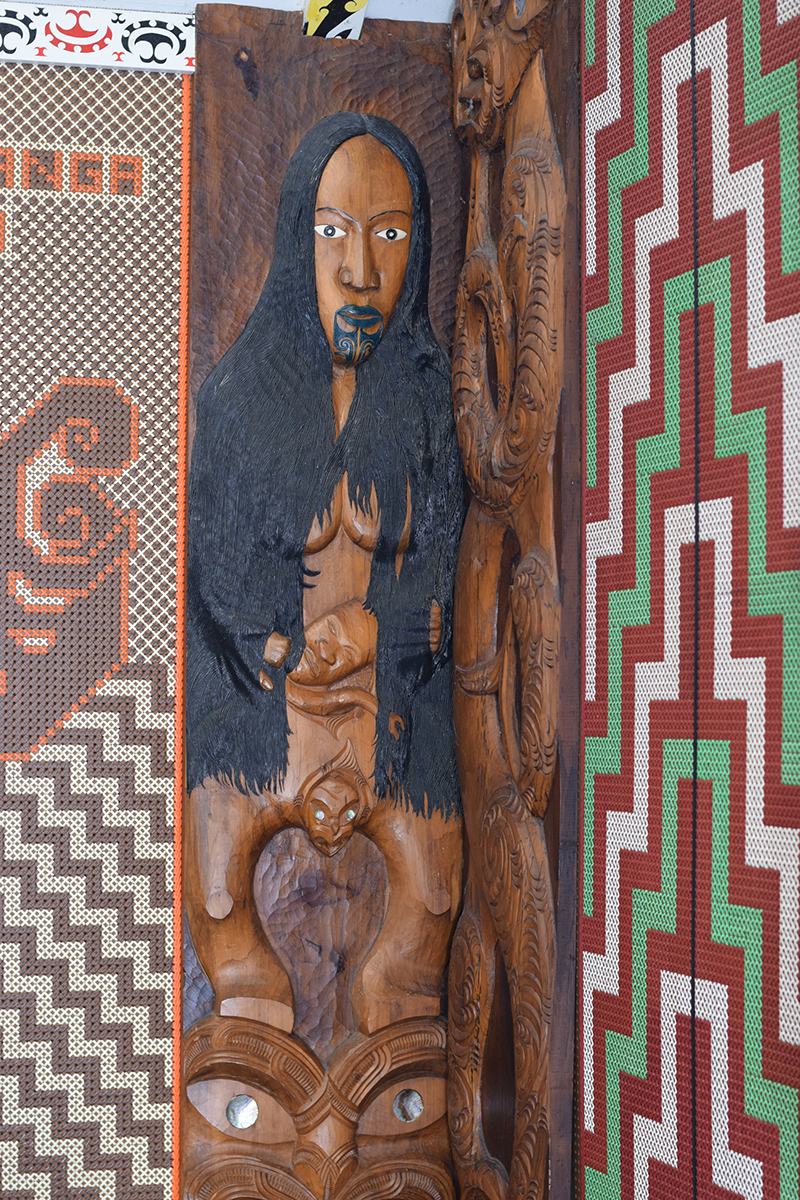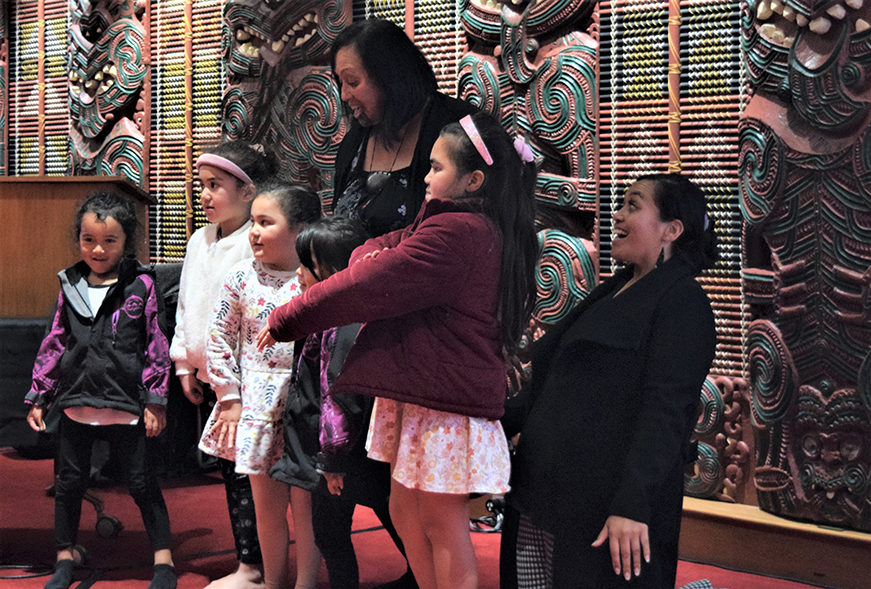The rights and responsibilities of wāhine Māori over land and natural resources
Ko ngā mōtika me ngā haepapa o ngā wāhine Māori ki te whenua me ngā rawa taiao
Witnesses told the Tribunal that women's mana whenua empowered them as kaitiaki who oversaw and cared for the land and natural resources. Witnesses also gave examples of women excelling in planting, growing, harvesting, and gathering kai and rongoā.
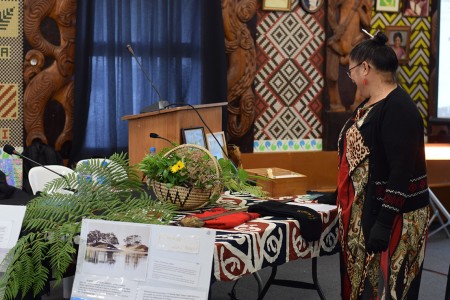
Aorangi Kawiti presenting taonga and rongoā to the Tribunal at Terenga Parāoa Marae, Whangārei
What witnesses said
- “Our communities and societal structures pre-European describe matrilocal residence patterns in which men moved, on marriage, to the settlements of their wives. Women maintained whānau structures, birthed pēpi, managed resources and kept the fires burning (ahi ka).” (Katarina Jean Te Huia, doc A115, p 3)(external link)
- “Rākeitākiha … was renowned for her propagation of harakeke which was famed for its exceptional quality and quantity. In Taranaki iwi’s historical account, iwi kōrero specifically mentions Rākeitākiha, indicating the high regard in which she was held.” (Aroaro Tamati, doc A131, p 4)(external link)
- “When waka went to sea, wāhine took responsibility of the Tauranga waka. This role included monitoring the environment for tohu that indicated a change in the environment, preparing for the waka return, and communicating information to the crews at sea and the other Tauranga waka along the coastline.” (Ripeka Hudson, doc A128, p 13)(external link)
- “Wāhine shared in activities like tuna (eel) fishing. Traditionally, harakeke (flax) was scraped with a kutai (mussel) shell to expose the fibres of the harakeke. It was then used to harvest tuna by holding the harakeke in the creek or river, above or below the carcass of an animal used to lure the tuna. The teeth of the tuna would get caught in the fibres of the harakeke, and the women would then flick the tuna onto the banks of the river.” (Violet Walker, doc A66, p 5)(external link)
- “In the old times, it was often the case that the men would move around and settle in unfamiliar lands, while the women remained on their own whenua. In this way, wāhine would develop a deep understanding of the land, which involved knowing all the locations for good kai, and how the land responded to the changing of the seasons. Wāhine were the keepers of this knowledge, and used it, with their mana whenua, to be kaitiaki of the land.” (Louisa Collier, doc A26(b), p 3)(external link)
- “The woman has dominance over the land through her mana whenua. As kaitiaki, she must also look after it. To fulfil this duty, the puhi carries the knowledge and the responsibility for the care of her environment.” (Louisa Collier, doc A26(b), p 4)(external link)
- “The role of wāhine Māori as gardeners for the production of kai involved significant leadership in managing and controlling the planting, growing and harvesting, sorting and distributing the harvest, and bringing people together to share kai and wānanga to plan for the year ahead … Wāhine also played important roles in gathering resources outside of the garden – they were experts at gathering rongoā from the forest.” (Rereata Makiha, doc A71, pp 6-7)(external link)
- “Women possessed property such as rights to cultivations or inherited resource areas in their own right, not in that of their husbands.” (Hinemoa Ranginui-Mansell, doc A129, p 7)(external link)
- “In the old days, both tāne and wāhine would be kaitiaki in certain areas. A person would be nominated to be kaitiaki of a certain area like the seabed. Of course, you must have mana whenua to be chosen.” (Materangatira Lily Porter, doc A16(a), p 6)(external link)
- “Rangatira over land was not determined by sex. Kaumātua can be of either sex. It was the mana of wāhine that determined where people settled. Wāhine were preoccupied with considering access to resources. This was due to their duties as primary caregivers of whanau in the provision of sustenance. Men were more concerned about the strategic and militaristic qualities of the place of settlement. Men were preoccupied with thoughts about defensive positions in case of war.” (Violet Walker, doc A66, p 12)(external link)
- “Whenua is a resource. You cannot manaaki someone without resources. If you cannot feed someone from your land, you have no mana. If you cannot give them water to drink from your land, you have no mana. The whenua is a resource that wāhine controlled. The men went off here and there. It was the women who were at home looking after the place, looking after the children, and doing the raising. For that to happen you need the resource from the land. You have no life without the land. Which is why the woman on the land hold the mana to make the decisions and govern through tikanka for the survival / development and well-being of the hapū.” (Ema Weepu, doc A136, p 6)(external link)
